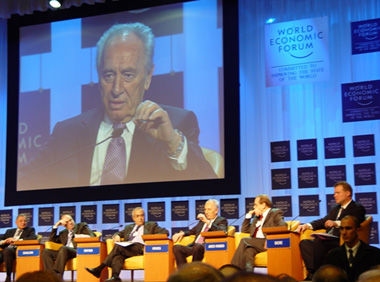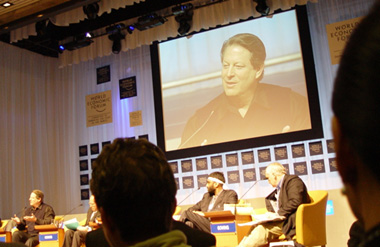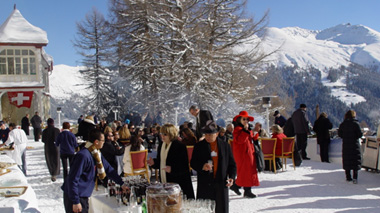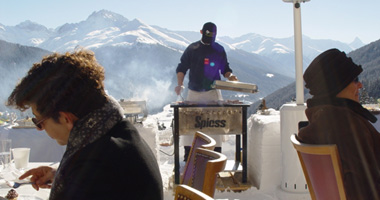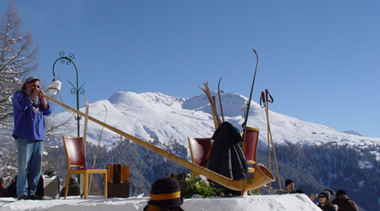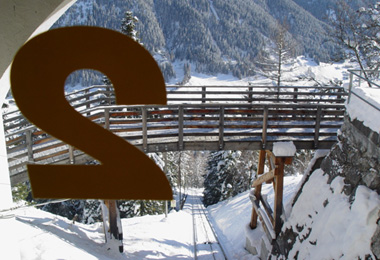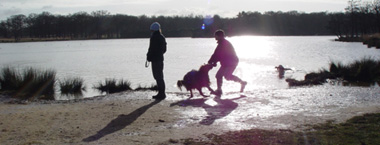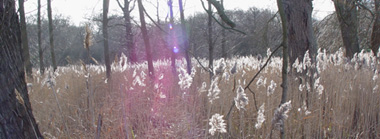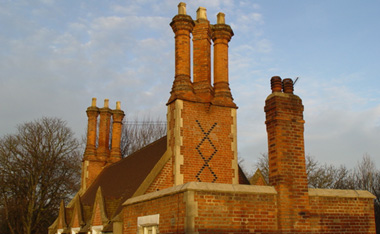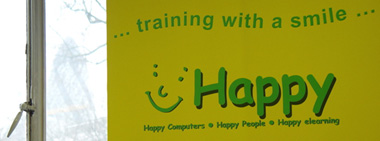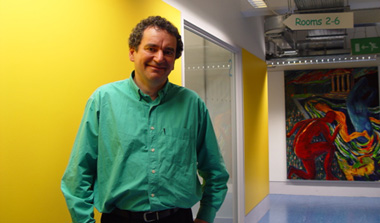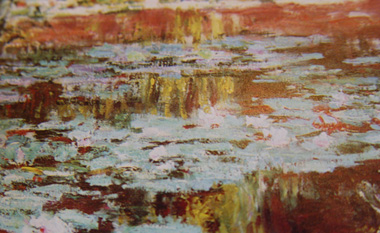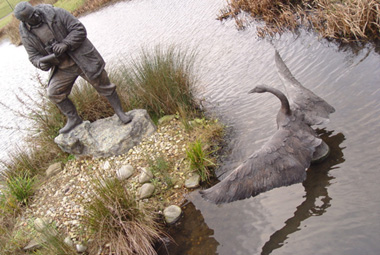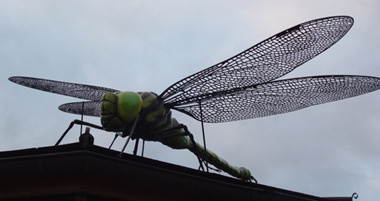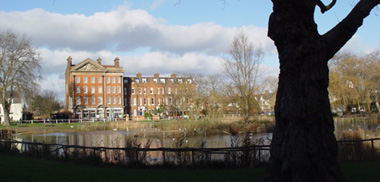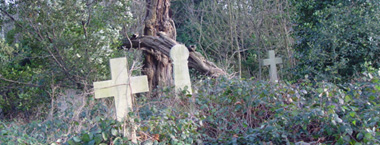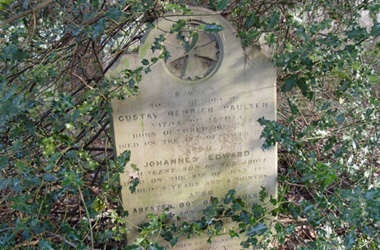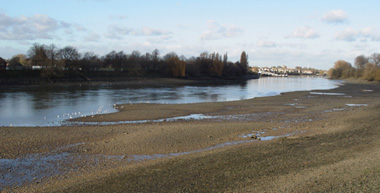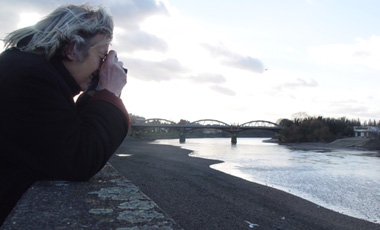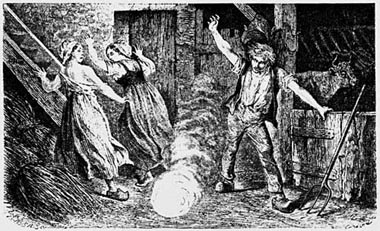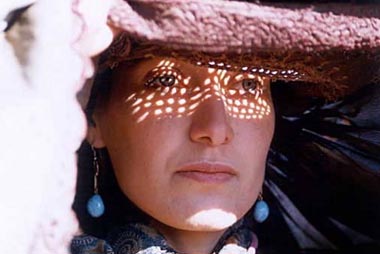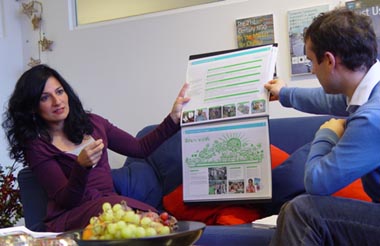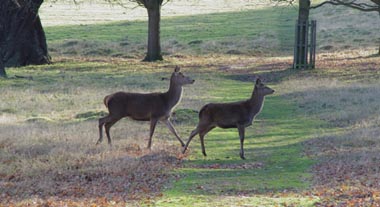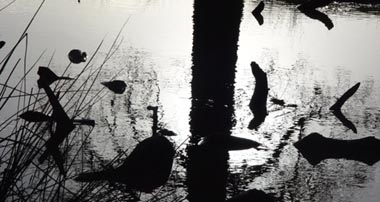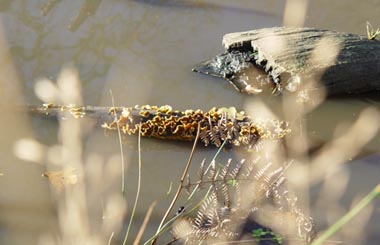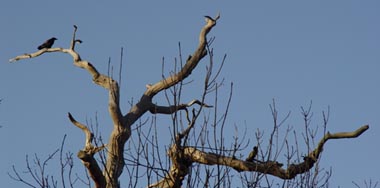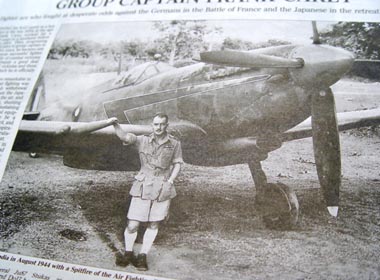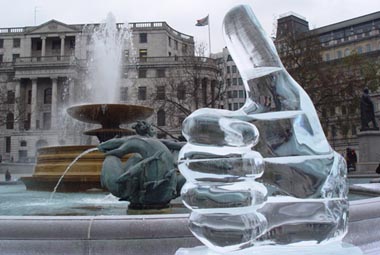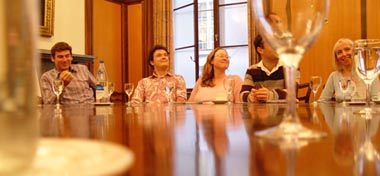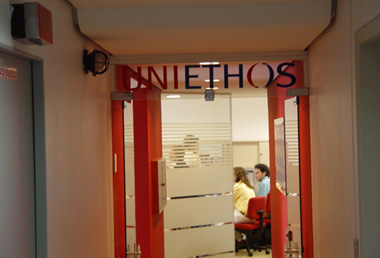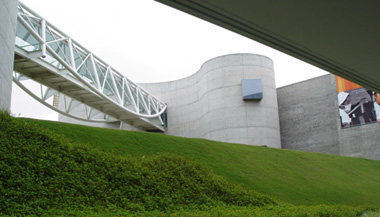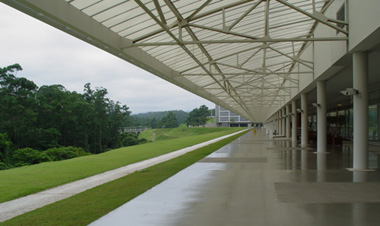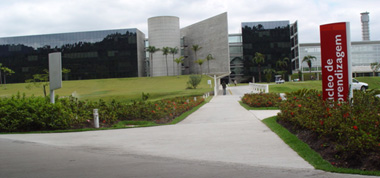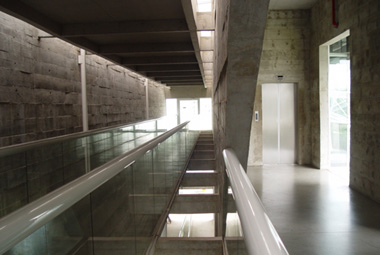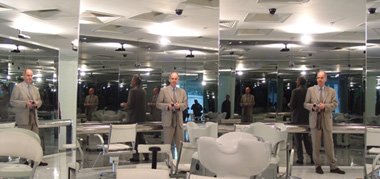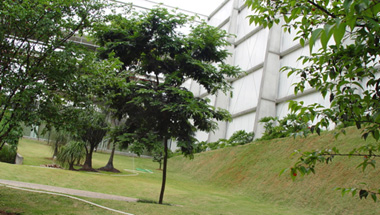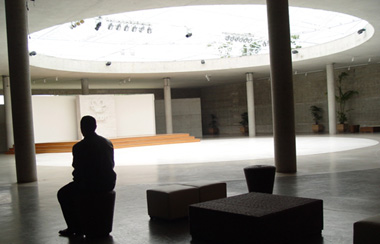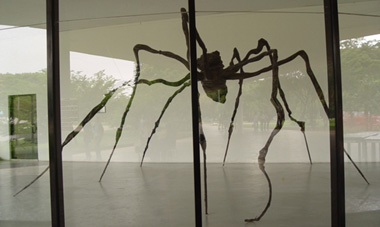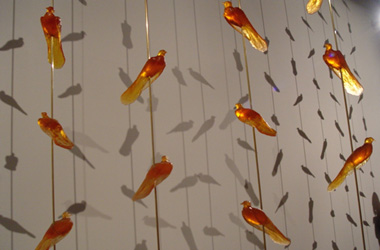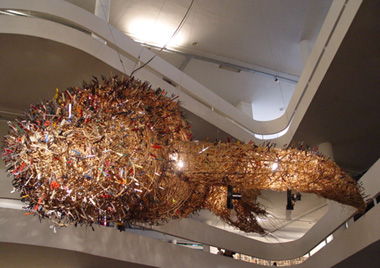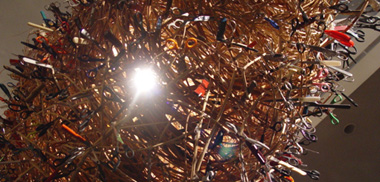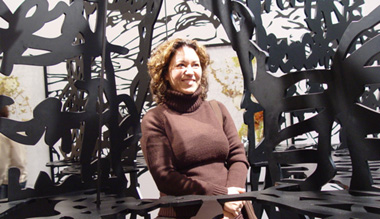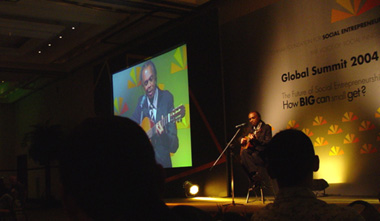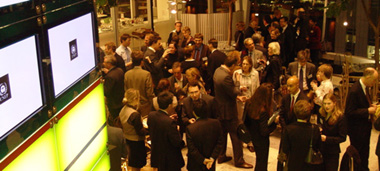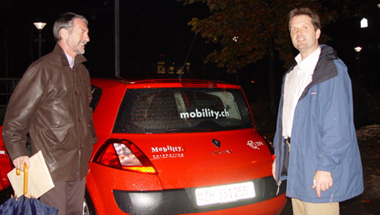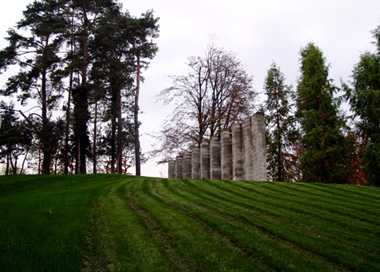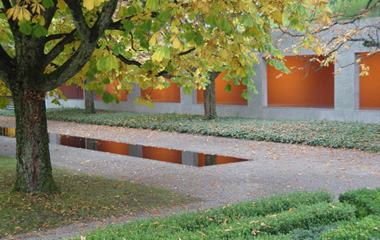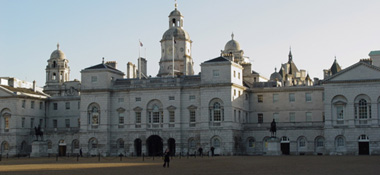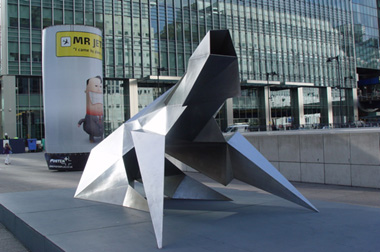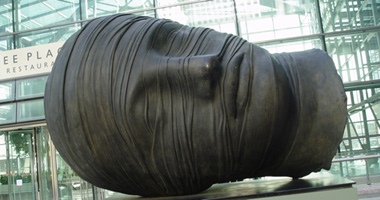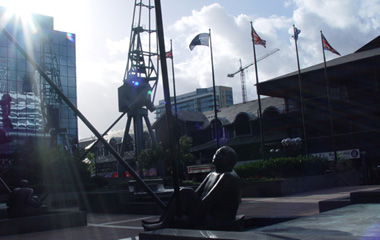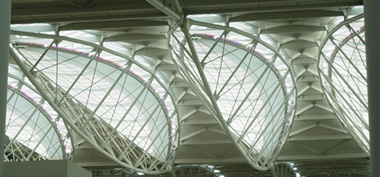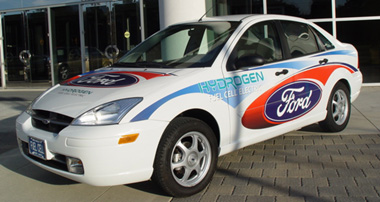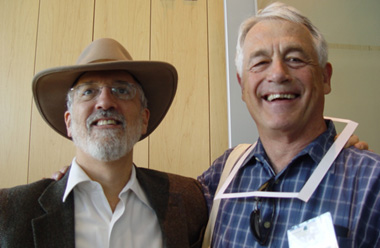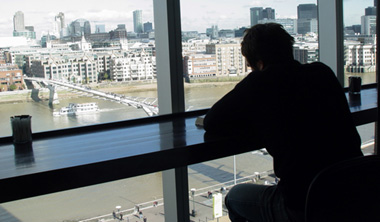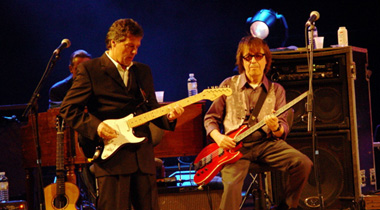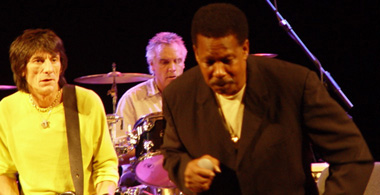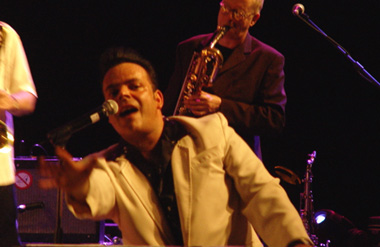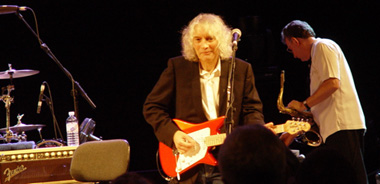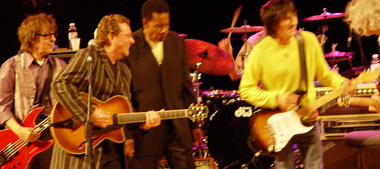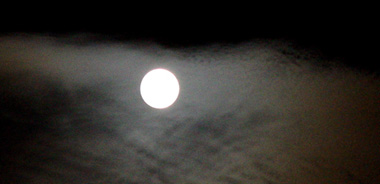Sunday, February 27, 2005
PETER BENENSON
One of the great privileges of advancing old age is that you get asked to sit on advisory councils and boards. One of these invitations that has meant a great deal to me has been the invitation to be a member of the board of trustees of the Business & Human Rights Resource Centre (www.business-humanrights.org), spun out from Amnesty. And today I was forwarded the news of the death of Amnesty International founder, Peter Benenson. Here’s the press release AI issued:
Death of Amnesty International founder:
Peter Benenson, 1921-2005
Peter Benenson, the founder of the worldwide human rights organisation Amnesty International, died yesterday evening. He was 83. Mr Benenson founded and inspired Amnesty International in 1961 first as a one-year campaign for the release of six prisoners of conscience. But from there came a worldwide movement for human rights and in its midst an international organisation — Amnesty International — which has taken up the cases of many thousands of victims of human rights violations and inspired millions to human rights defence the world round.
“Peter Benenson’s life was a courageous testament to his visionary
commitment to fight injustice around the world,” said Irene Khan,
Secretary General of Amnesty International.
“He brought light into the darkness of prisons, the horror of torture
chambers and tragedy of death camps around the world. This was a man whose conscience shone in a cruel and terrifying world, who believed in the power of ordinary people to bring about extraordinary change and, by creating Amnesty International, he gave each of us the opportunity to make a difference.”
“In 1961 his vision gave birth to human rights activism. In 2005 his
legacy is a world wide movement for human rights which will never die.”
The one-year Appeal for Amnesty was launched on 28 May 1961, in an article in the British newspaper, The Observer, called “The Forgotten Prisoners“. That appeal attracted thousands of supporters, and started a worldwide human rights movement.
The catalyst for the original campaign was Mr Benenson’s sense of
outrage after reading an article about the arrest and imprisonment of
two students in a cafe in Lisbon, Portugal, who had drunk a toast to
liberty.
In the first few years of Amnesty International’s existence, Mr Benenson supplied much of the funding for the movement, went on research missions and was involved in all aspects of the organisation’s affairs.
Other activities that Mr Benenson was involved in during his lifetime
included; adopting orphans from the Spanish Civil War, bringing Jews who had fled Hitler’s Germany to Britain, observing trials as a member of the Society of Labour Lawyers, helping to set up the organisation “Justice” and establishing a society for people with coeliac disease.
At a ceremony to mark Amnesty International’s 25th anniversary, Mr Benenson lit what has become the organisation’s symbol — a candle entwined in barbed wire — with the words: “The candle burns not for us, but for all those whom we failed to rescue from prison, who were shot on the way to prison, who were tortured, who
were kidnapped, who ‘disappeared’. That is what the candle is for.”
Today Amnesty International is into its 44th year. It has become the
world’s largest independent human rights organisation, with more than 1.8 million members and committed supporters worldwide.
For more information:
The man who decided it was time for a change – Peter Benenson remembered by Richard Reoch:
http://amnesty-news.c.topica.com/maadeqTabeANCbdSp2Ab/
Background information on Peter Benenson, the founder of Amnesty
International:
http://amnesty-news.c.topica.com/maadeqTabeANDbdSp2Ab/
Saturday, February 26, 2005
MERLIN, GREEN ALLIANCE & NOVO NORDISK
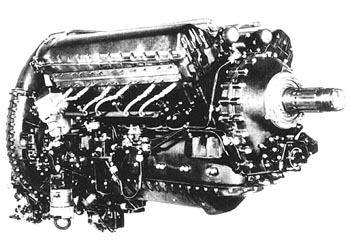
Source: encyclopedia.thefreedictionary.com
Back late last night – after an aborted landing at Heathrow, when our plane had to shriek back into the skies – from a day spent outside Copenhagen with Novo Nordisk, alongside Sophia Tickell. When I got home, Michael Wood was on TV probing the myth of Arthur and the Round Table. Merlin turns out to have been a flaxen-haired boy, by Wood’s account. And thoughts of airborne excitements, of once-and-future kings and of those who will return to defend England, put me in mind of Thursday evening and a very different breed of Merlin.
I was strolling around London’s Science Museum at an after-hours reception ahead of 300 or so people convening in the iMAX theatre to celebrate 25 years of the Green Alliance (www.green-alliance.org.uk). Among the extrordinary flotsam and jetsam of the Industrial Revolution, I came across a Merlin engine from a 1943 Spitfire, which rose to defend these islands in desperate days. Oddly, if someone hadn’t pointed it out I would probably have brushed past the Merlin in quest of Stephenson’s Rocket, which at least had a chimney. But the Merlin certainlly has presence, even on blocks. Ever the romantic, I adore the engine’s sound, though no doubt those who tore through the skies behind these things – like my father – experience a rather different set of emotions when one of the few working survivors roars throatily overhead.
And that had me wondering what all of those environmentalists gathered in the Science Museum will be best remembered for – or by? Given that people like the Eden Project’s Tim Smit and BedZED’s Bill Dunster were among the speakers, its at least possible that environmentalism will be as much remembered as much for things done as for things resisted.
MAALA SOCIAL RESPONSIBILITY RATING
Having only been to Israel once, in the late 1950s, a visit which I loved (particularly sitting on the lap of the pilot of a DC-3 over the Dead Sea and being allowed to steer), I have found it a difficult country to come to terms with, not least because of the Palestinian issue. But in the midst of it all we have been lucky to come across some really impressive Israelis, among them Talia Aharoni, who is President of Tel Aviv-based MAALA – Business for Social Responsibility. MAALA have just announced what sounds like a significant advance, the launch of a new social responsibility rating index on the Tel-Aviv Stock Exchange. Their press release:
TEL-AVIV STOCK EXCHANGE LAUNCHES SOCIALLY RESPONSIBLE INVESTING INDEX
Monday, February 14, 2005 – The Tel-Aviv Stock Exchange launched the Maala Socially Responsible Investing (SRI) Index on February 13. The new index comprises the shares of the top 20 companies on the Maala social responsibility rating.
Maala is a non-profit professional organization uniting member businesses that are leaders in working towards social change in Israel. The organization promotes social and environmental responsibility in business and rates the largest companies in the economy according to their level of community involvement and contribution to society. Maala rates companies which are included in the TA-100 Index or whose turnover is larger than $100 million, from various sectors, including services, commerce, industry, construction, and infrastructure.
Shares on the Maala Social Responsibility Index must be among the TASE’s 200 most actively traded shares and must meet minimum public float requirements, including a 15% float rate and a float value of at least $18 million. The index will be published daily at the end of trading and updated annually on June 1 (first update on June 1, 2005).
Maala’s rating criteria reflect the organization’s view that social responsibility is expressed not merely in donations, but in the way in which firms manage their on-going business activities. Criteria include the scope of contributions in shekels, contributions relative to profit or turnover, and the companies’ conduct towards their employees, customers, suppliers, and the community and environment at large.
The complete criteria for Maala ratings are available at www.maala.org.il (Hebrew only).
Tuesday, February 22, 2005
CLIMATE HEATS UP AS AN ISSUE
Spent much of today working on slides for a series of presentations this year, starting off with a session with Novo Nordisk in Denmark on Friday, though with detours to do things like a BBC World interview on green consumerism in London and Beijing. In the process of putting together the slides, though, I have been asking friends and colleagues in different parts of the world for images illustrating their recent work. This evening, Canada’s GlobeScan (www.globescan.com) come back with a fascinating set of charts based on their surveys of sustainability experts internationally. Have taken part in their surveys for years.
The chart shown below illustrates the way that climate change has overtaken biotechnology-based issues, a key concern for companies like Novo in recent years. Interesting to recall that our relationship with Novo started in 1989, after the publication of The Green Consumer Guide, which had implications for their deteregent enzymes business. The way they handled the issue was brilliant – and the company remains one of the very few ‘pure play’ sustainability companies.
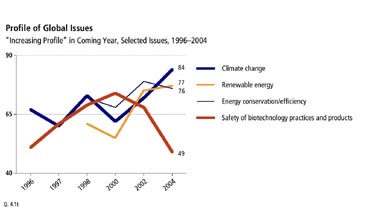
(© GlobeScan 2005)
Sunday, February 20, 2005
BRAUTIGAN & BILLABONG ODYSSEY
Gaia has been buying up the works of Richard Brautigan on eBay — and I started the day with his A Confederate General From Big Sur. My favourite passage to date is the piece on the punctuation marks in Ecclesiastes. The main character spends night after night reading Ecclesiastes and recording the number of each type of punctuation mark in his notebook. His explanation? He was treating it as a study in engineering. “Certainly before they build a ship know how many rivets it takes to hold the ship together and the various sizes of the rivets. I was curious about the number of rivets and the sizes of those rivets in Ecclesiastes, a dark and beautiful ship saling on our water.”
Then, after a walk with Elaine in Richmond Park, where we passed through a herd of red deer and could smell their unmistakable, unfortgettable aroma, Gaia and I sat down and watched Billabong Odyssey (www.billabongodyssey.com), a wildly wonderful surf movie. Lacks the gravitas of Riding Giants, which we saw recently, but what unadulterated fun! The image below was snapped from the TV screen at one point in the proceedings, actually the high point, when Mike Parsons scored 10 out of 10 for his unbelievable ride on a deep ocean giant. When that sort of thing happens, who’s keeping score? Not me.
A FUTURE FOR THE UN?
It felt faintly disloyal, but when John Mannochehri and I had lunch on Friday, we were talking about whether or not there was a future for the United Nations. John used to work for the United Nations Environment Programme and SustainAbility has partnered with UNEP for over ten years on our Engaging Stakeholders programme. But in today’s Sunday Times, Mark Mallock Brown — chief of staff to UN Secretary-General Kofi Annan — goes way further. He notes that the UN is currently in deep trouble, having to explain itself to no less than six Congressional committees in the US, and that the oil-for-food scandal and “flagrant breaches of UN codes of behaviour in peacekeeping operations” are all conspiring to raise question marks over the organisation’s future. But he also notes the key role the UN has been playing in responding to the tsunami disasters and in places like Darfur, Sudan. There seems to be a strong downward momentum to some of this stuff, but there’s no question we need something like the UN, a 21st century version of this 1940s-era creature. There will be a UN summit in September, 60 years after the organisation was founded, so maybe someone will pull a rabbit out the hat in the meantime — and in time?
Thursday, February 17, 2005
FUTURE GENERATIONS TODAY: NSPCC
Because sustainable development is fundamentally about intergenerational equity, the agenda can be a bit slippery for business people with 24/7 lives. Probably the closest thing we have to future generations today is the current generation of young people, which is one reason why SustainAbility this year chose to support the National Society for the Prevention of Cruelty to Children (NSPCC). This morning a couple of people from NSPCC came in to do a team briefing, which was both eye-opening and disturbing. I hadn’t realised that levels of child abuse in the UK were quite so high, nor that – for example – NSPCC people trying to help child prostitutes in London’s East End are being shot at by pimps, so that they have to change their cars regularly in order to minimise the chances of being spotted. More at: www.nspcc.org.uk
Tuesday, February 15, 2005
MCLIBEL HUMAN RIGHTS WIN
Interesting development in the McLibel case. The two environmental campaigners who were the subject of a bittterly-fought libel case brought by McDonald’s seem to have won their appeal to the European Court of Human Rights. The Court concluded: “Given the enormity and complexity of [the trial process], the Court does not consider that the correct balance was struck between the need to protect the applicants’ rights to freedom of expression and the need to protect McDonalds’ rights and reputation.” By way of explanation, the Court added: “The more general interest in promoting the free circulation of information and ideas about the activities of powerful commercial entities, and possible ‘chilling’ effect on others are also important factors to be considered in this context, bearing in mind the legitimate and important role that campaign groups can play in stimulating public discussion.”
Having fought our own battle against McDonald’s in the late 1980s, in respect of what Julia Hailes and I had said in The Green Consumer Guide, I take a certain interest in the McLibel proceedings … http://news.ft.com/cms/s/4eb50e06-7f47-11d9-8ceb-00000e2511c8.html
Monday, February 14, 2005
PINSTRIPED CAMPAIGNER?
Having always been something of an outsider, it’s strange to be periodically sucked back into the fold. If there was one thing I really valued at Bryanston School, apart from the proximity to Hod and Hambledon Hills, it was the encouragement we got to make up our own minds, follow our own paths. One result: I refused to be confirmed, refused to join the Sea Cadets and, when the time came, also refused to join up for the Old Boys Society, whatever it was called.
But now I appear on the back page of Bryanston Newsletter 18 (Winter 2005), in a piece called ‘The Pinstriped Campaigner’, although it has yet to be posted on the school’s website (www.bryanston.co.uk/news/news_main.htm). And I have also done an essay for Bryanston: Reflections, due to be published in July, in celebration of the first 75 years of the school’s history.
BIOREGIONAL AND BEDZED
Interesting meeting this morning with BioRegional Development Group (www.bioregional.com), housed in the BedZED development south of London. BedZED was designed by Bill Dunster (www.zedfactory.com/home.html). Think I may see if can organise a SustainAbility team site visit. Certainly, the BedZED concept is a prime candidate for the ‘Showcase’ area of SustainAbility’s new website, due to launch shortly.
Saturday, February 12, 2005
HP COUP
One thing that happened while I was offline last week was the coup at HP (Hewlett-Packard), whose beautifully designed Palo Alto boardroom I found myself in late last year – though not when the board was present (see October 15). What stories those walls could now tell. CEO Carly Fiorina fell foul of what The Times today calls “a classic boardroom ambush” — and bade farewell to 142,000 employees, a $3.2 million salary and a company that many now see as having lost its way. A recent Fortune profile, which I read a few weeks back, must have left many readers wondering whether the writing wasn’t already on the wall.
My main reason for bringing the HP story up, however, is that as sustainability-style thinking moves into the mainstream, we have seen a growing number of SD- or CSR-‘friendly’ business leaders losing their jobs, perhaps most spectacularly Sir Philip Watts of Shell. To some degree such things are inevitable, given that they are part and parcel of mainstream business life, but Fiorina’s ouster sure as hell won’t help the wider corporate responsibility agenda in Bush’s America. And it will be interesting to see what happens to her ‘e-inclusion’ strategy (www.hp.com/e-inclusion/en/) now she has gone.
Friday, February 11, 2005
WE’RE BAAAAACK
After a week or so trying to get this blog back online, it seems to be up and running again – though the blogging toolbars have shrivelled on the Mac. If it’s not one thing … Not that the week has been wildly exciting, with much of it spent editing SustainAbility’s new website. But we did have an interesting workshop a few days back on corporate priority setting and Peter (Zollinger) stayed with us for a couple of days in the week – and, as usual, we watched a couple of the second series editions of The West Wing. Fabulous. And this evening a bunch of us — including Elaine — collapsed on the office sofas with glasses of sparkling wine and unravelled.
Saturday, February 05, 2005
CBI ERUPTS
Well, my intuition that some long-standing Davos supporters — and their ilk — would be upset about this year’s agenda is confirmed by the outspoken attack by CBI Director-General Sir Digby Jones. As the Davos event wound down, he apparently accused WEF of allowing the NGOs to “hijack” the agenda. “Too many sessions have been an excuse to beat up on business,” he is quoted as saying in Roberto Savio’s Other News. He argued that there should have been more on risk takers and wealth creators.
But what can be seen as the ‘hijacking’ of the WEF agenda can also be seen as an inevitable stage towards the time when a new set of entrepreneurs, investment bankers and venture capitalists start to drive new waves of creative destruction in the global economy. And in that context I had an interesting lunch yesterday with a couple of venture capitalists who want me to join up for a new venture fund in the area of sustainable technology. Given that I am keen that SustainAbility shifts a proportion of its effort into the area of new ventures, I’m taking the invitation seriously.
Friday, February 04, 2005
IDENTITY CORRECTION – THE YES MEN
The leading edge of activist continues to mutate. Hot on the heels of their spoof Dow Chemical BBC interview on the twentieth anniversary of the Bhopal disaster, The Yes Men (“activist-pranksters” Andy Bichlbaum and Mike Bonanno) are back with a film — which launches on 18 February (www.theyesmen.org). The focus of the film (www.theyesmenmovie.com) is on their hijacking of the World Trade Organization (WTO) website, or at least their launching of a website that mimics the WTO’s website — the same trick they pulled with Dow.
They call the process ‘identity correction’. “Unlike identity theft,” says Bonanno, “where a crimical uses your identity in order to steal something, we thought, ‘We’re going to target the biggest criminals and we’re going to steal their identity to make them more honest. And so we impersonate them to make them more honest.”
Thursday, February 03, 2005
MY SECOND HOME – BA
Yesterday, had lunch with top Microsoft people and a number of European movers and shakers. Late afternoon, after another Microsoft meeting (in a room with a view), I walked back to the Prague Hilton in driving, slushy snow.
Then this morning out to the airport, where it struck me that BA really is my second home. That said, the safety announcement was done at a blistering speed which even I, as an English-speaker, struggled to keep up with, added to which it was in a regional accent. Then customer questionnaires came around and, unusually, I took one and let BA have it with both barrels. Am I getting old and cantankerous? Then into office for meeting with some Japanese colleagues, following which I headed home – among other things – to plow through a mountain of cuttings that Elaine had produced while I was away.
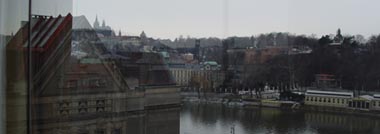
Room with a darkish view (©JE)
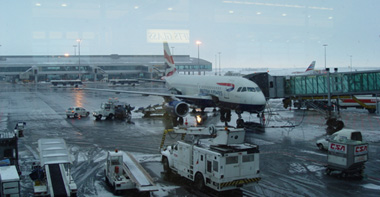
My second home (©JE)
Tuesday, February 01, 2005
IT’S PAUL HAWKEN, BY A WHISKER
Back late from a Microsoft dinner in the Spanish Hall, Prague Castle, to find an e-mail from GlobeScan with the results of their latest survey of sustainability experts. One question in the survey had asked who was the best author on sustainable development, with no prompts on names. Of those named, Paul Hawken came top (22), I came second (21) and Amory Lovins third (20). Not sure the numbers mean that much, though they’re substantially higher than for the next cluster of names mentioned, but it’s nice to be in such company.
POST SAM, IT MUST BE PRAGUE
Arrived in Prague this morning for a Microsoft Government Leaders Forum. Last couple of days, post Davos, were spent in Zurich with Peter Zollinger and his family, including — yesterday — my first Dow Jones Sustainability Indexes advisory board meeting with Sustainable Asset Management (SAM: www.sam-group.com). Great session with the SAM team (Alex Barkawi, MD of SAM Indexes; Reto Ringger, SAM’s founder and CEO; and Christian Werner, SAM Head of Research), with the external folk being: Michelle Chan-Fishel (Program Manager, Green Investments Project, Friends of the Earth, USA), Bill McDonough (www.mbdc.com), John Prestbo (Editor, Down Jones Indexes) and Bjorn Stigson (www.wbcsd.org).
Odd feeling as Peter accompanied me to the station this morning: the snow had thawed and was re-freezing, so it was like — as Peter described it — walking on wet soap. A slithery start to the day, especially when dragging a heavy case on wheels. But then whisked through the VIP route at Prague airport, with the case following me on automatic. I could almost get used to this.

